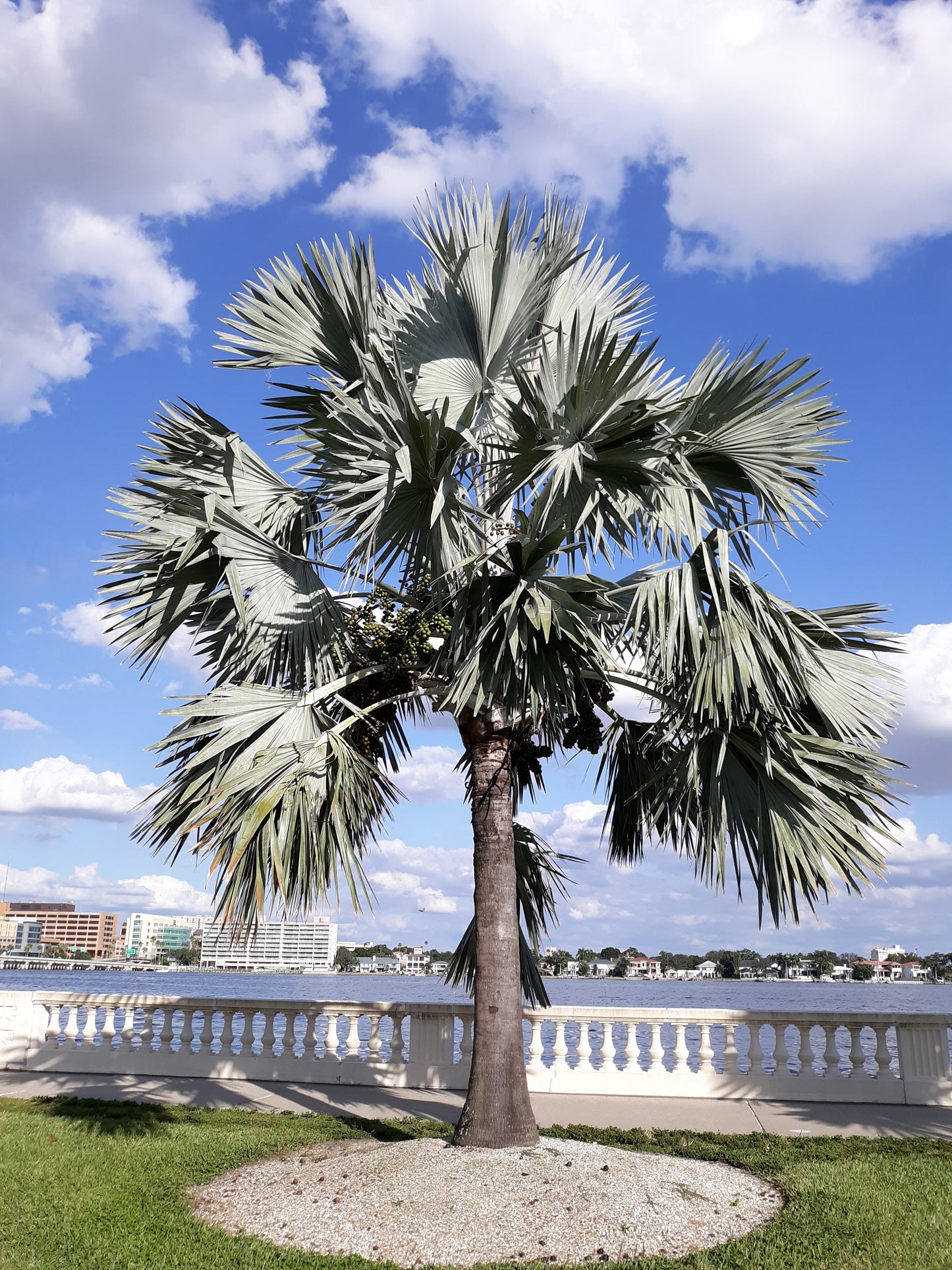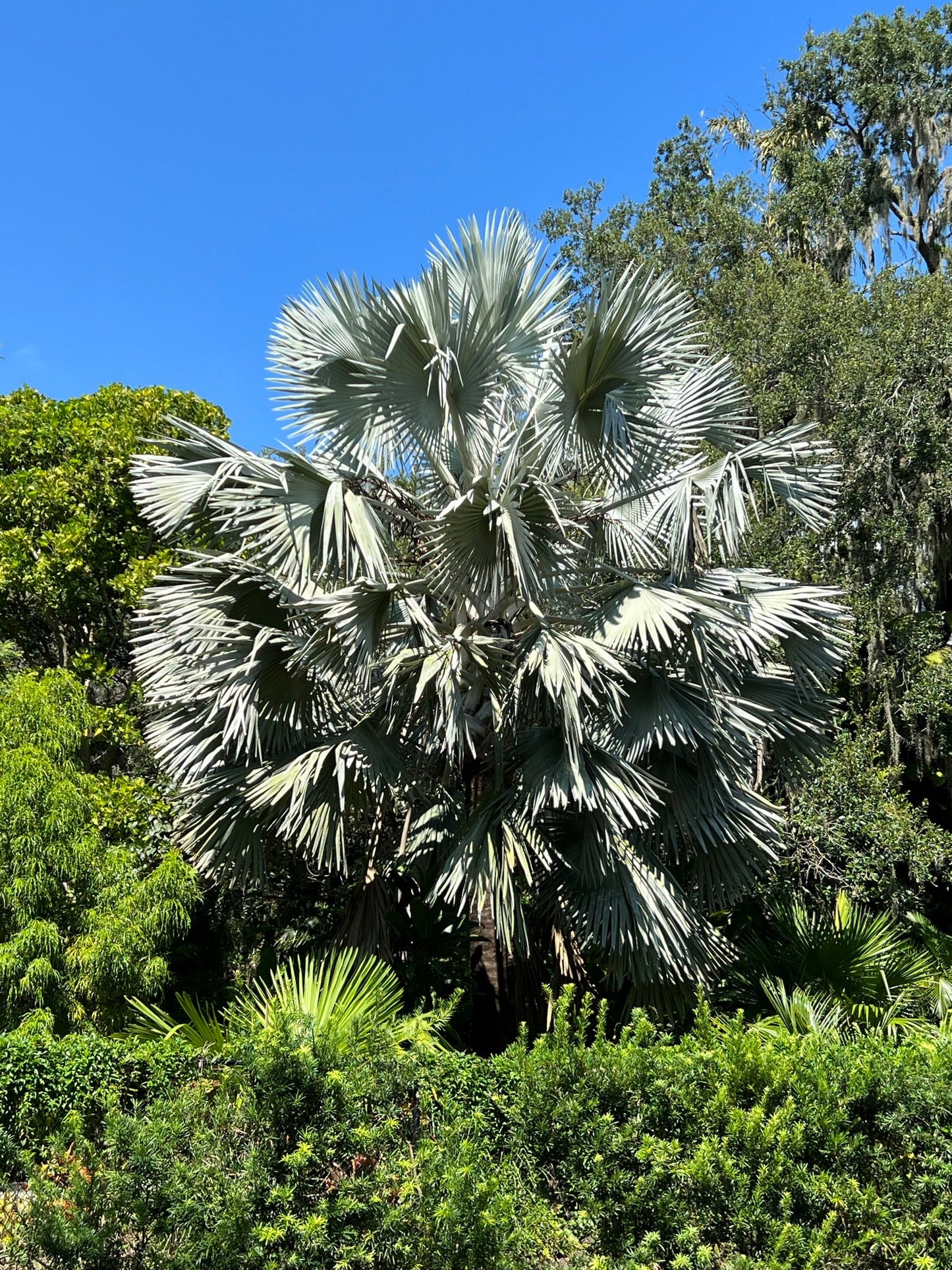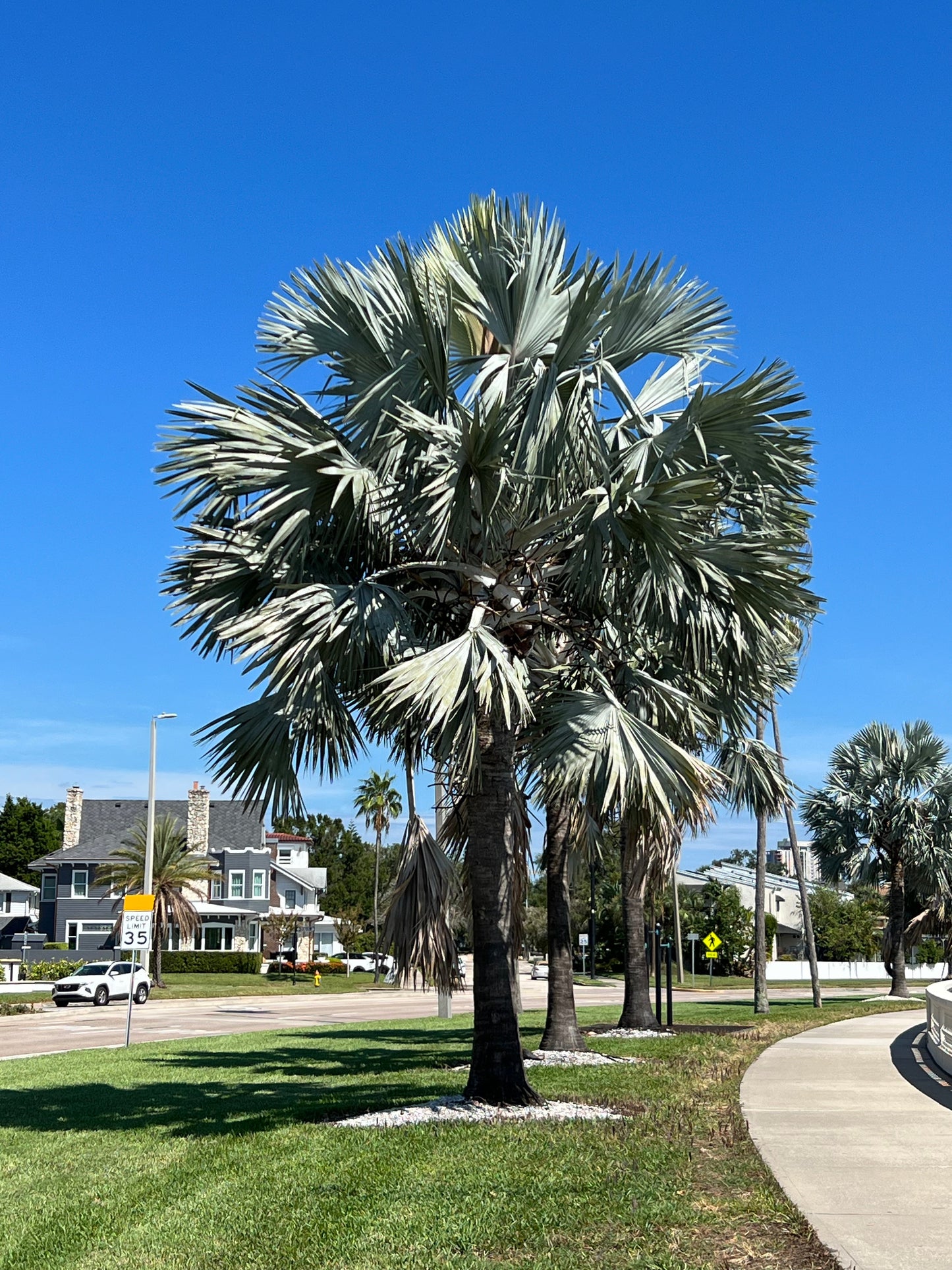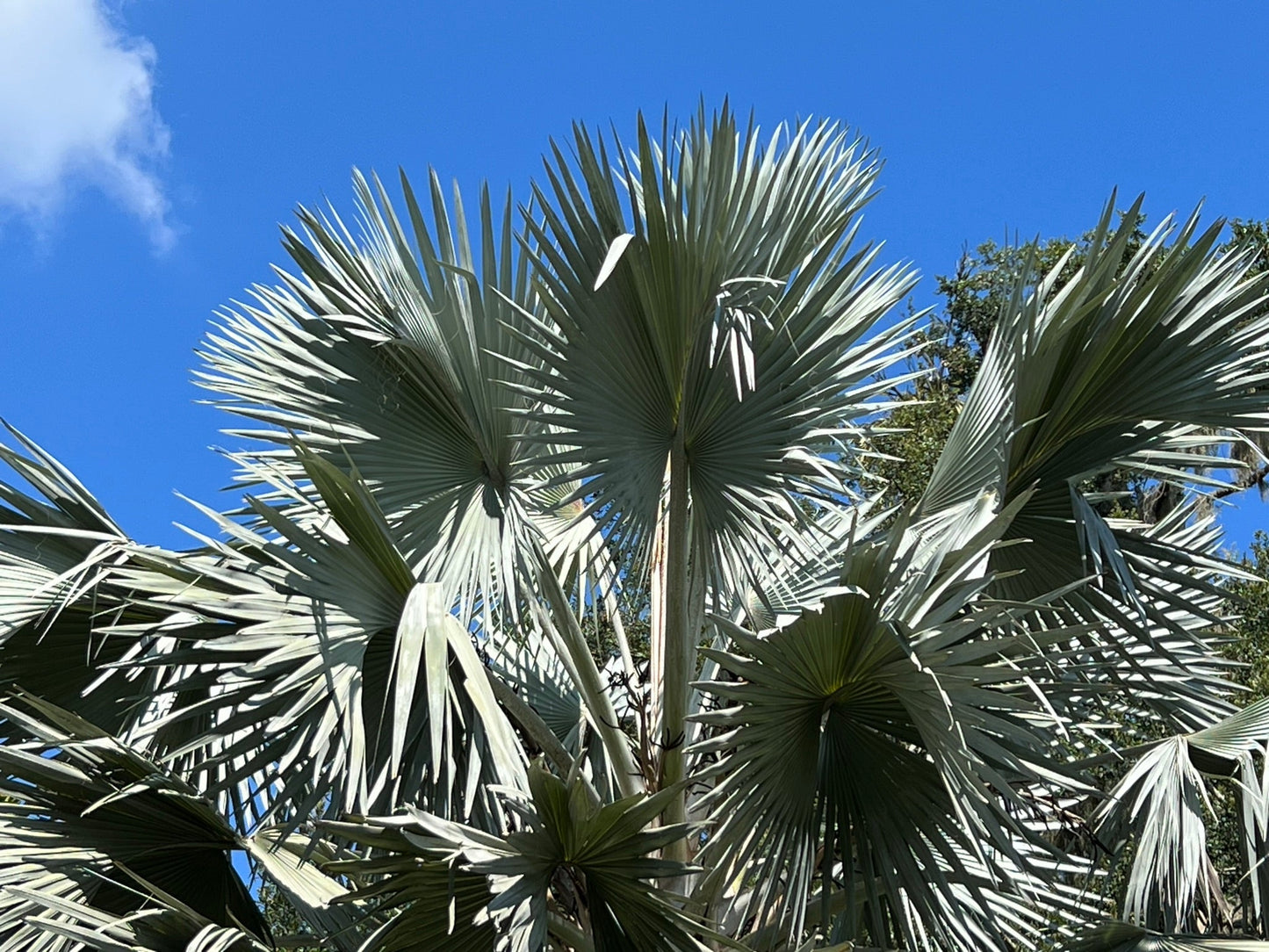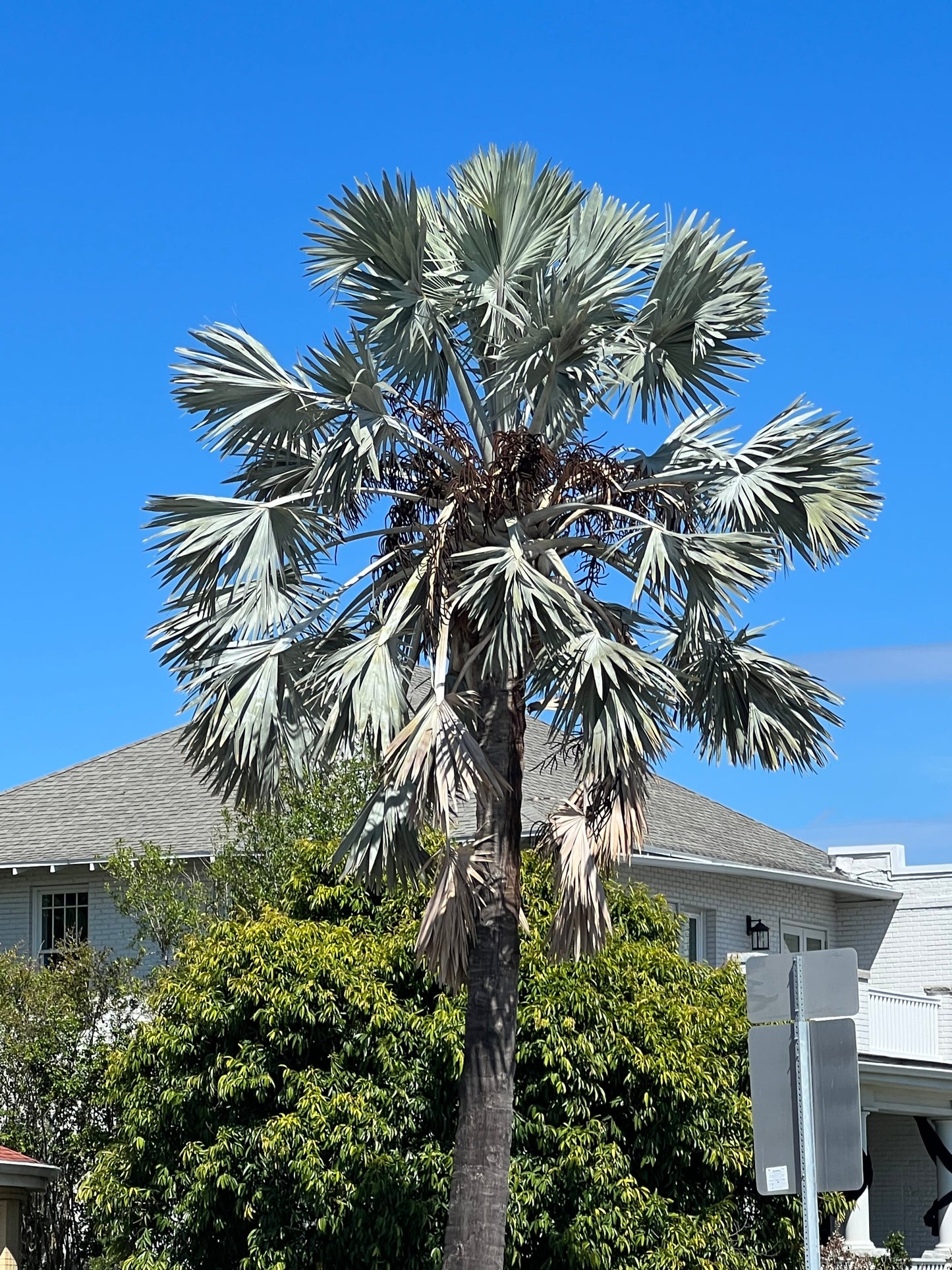Floridaseeds
Bismarck Palm Bismarckia nobilis 10 Seeds
Bismarck Palm Bismarckia nobilis 10 Seeds
Couldn't load pickup availability
Bismarckia nobilis is a solitary palm species native to the dry forests and savannas of Madagascar. Known for its large, circular, fan-shaped leaves, it exhibits a silvery-blue to gray-green hue that gives it a dramatic and architectural presence in landscapes. The palm typically grows with a single, stout trunk that can reach impressive heights of up to 25 meters in its natural habitat, though it is more modest in cultivation. Bismarckia nobilis is highly tolerant of drought and full sun, making it ideal for xeriscaping and tropical gardens, though it prefers well-drained soils. The palm produces small, inconspicuous flowers in clusters, followed by rounded fruits that are rarely of ornamental interest. Valued for its bold foliage and low maintenance requirements, Bismarckia nobilis is a favorite in botanical collections and as a statement tree in parks, large gardens, and streetscapes worldwide.
Materials
Materials
Shipping & Returns
Shipping & Returns
Dimensions
Dimensions
Care Instructions
Care Instructions
Share
